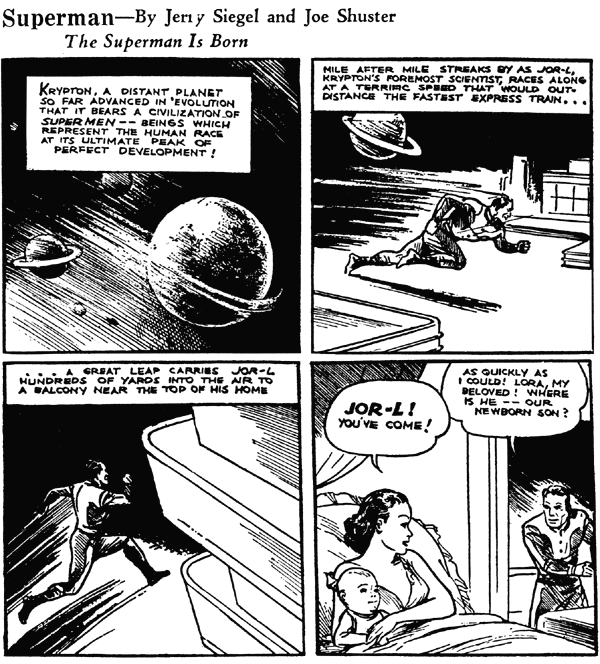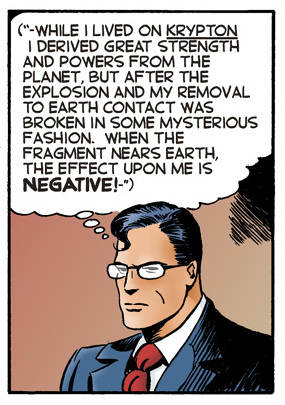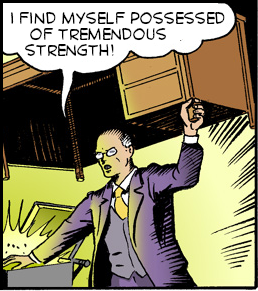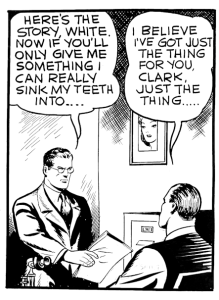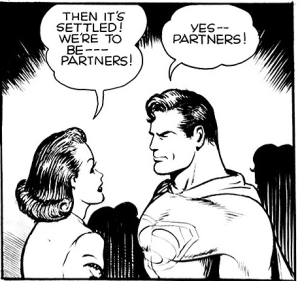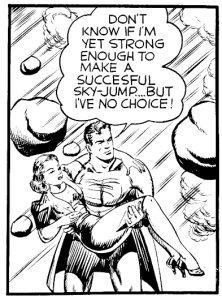In 1940, Superman co-creator Jerry Siegel wrote a script for new Superman story that, had it been published, would have introduced a number of firsts:
K-Metal
The mysterious K-Metal is an energizing substance and a remnant of the destroyed planet Krypton. In Jerry Siegel’s original Superman continuity, Superman did not gain his powers from Earth’s lighter gravity, or from exposure to the rays of Earth’s yellow sun. Those explanations are later inventions.
Superman had superpowers because he was from Krypton, where everyone just naturally had superpowers.
But why did everyone have them?
The answer is given in The Secret of the K-Metal – the superpowers are induced from Krypton itself; they are a result of being in proximity to the planet:
Unlike the later radio-show substance of “Kryptonite”, which removes superpowers, K-Metal causes superpowers. This is why, in The Secret of the K-Metal, anyone else who comes in contact with K-Metal gains powers – just as everyone on Krypton gained powers.
But due to the violent nature of Krypton’s destruction, Superman and the K-Metal fragment now repel each other. If you were to break a magnet into two pieces, those two formerly unified pieces would then repel each other due to having the same charge.
The energizing K-Metal works the same way.
Perry White
The Secret of the K-Metal marks the first time that the name of Daily Planet editor, Perry White, is given in any form.
Lois Learns of Superman’s Dual Identity
Probably the most famous aspect of The Secret of the K-Metal is the change in the relationship between Lois Lane and Clark Kent. Instead of feeling the need to keep his dual identity concealed from “the woman he loves,” the two now plan to move forward working together as partners.
Superman Learns of His Origin
Superman learns for the first time that he must come from another planet other then Earth.
Superman’s New Power: Sky-Jumps
The story also shows an important development in Superman’s powers. Here, instead of merely “leaping,” Superman is now capable of “sky-jumps,” an important milestone on his way to full flight capability.
The story was completed by the Joe Shuster studio, which created 26 pages of finished artwork, ready for publication.
There is no definitive answer as to why it was not published. However, when Jerry Siegel submitted the written plot to DC, a number of requested minor editorial changes were sent back. But because the finished story had already been drawn, those changes were never made.

